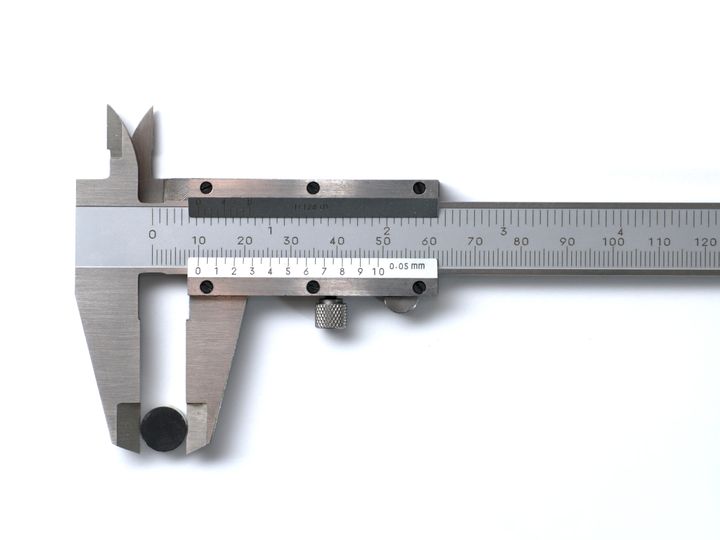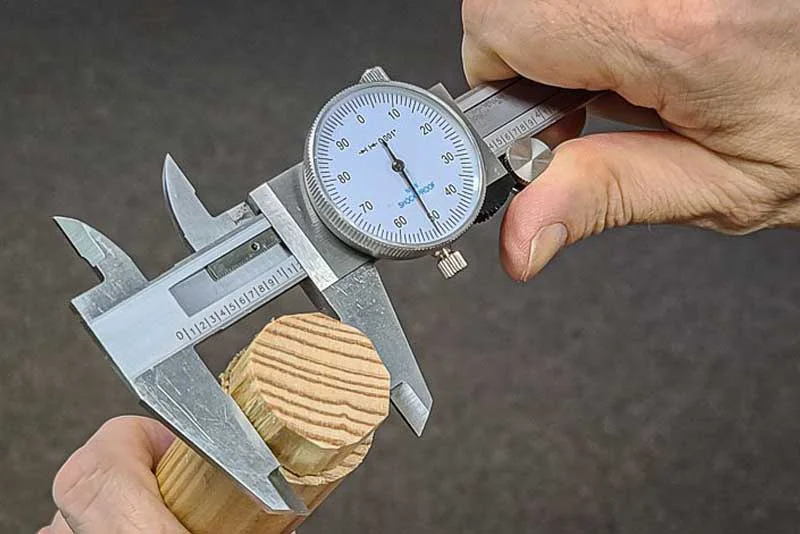


Calipers are essential precision instruments used across various industries for accurate dimensional measurements. This comprehensive guide delves into the intricacies of calipers, exploring their construction, types, applications, and techniques for optimal usage, ensuring you have a thorough understanding of these indispensable tools.
Precise measurements are critical in numerous fields, from engineering and manufacturing to scientific research and automotive repair. Calipers serve as invaluable tools, enabling professionals to obtain highly accurate dimensional data with ease. Their versatility and reliability have made them indispensable in various industries, where even the slightest deviation can have significant consequences.

Calipers are meticulously designed and constructed to ensure accurate and consistent measurements. Their main components are:
| Part | Description |
|---|---|
| Main Scale | The primary ruler used for measuring larger dimensions, typically marked in inches or millimeters. It serves as the foundation for precise measurements. |
| Vernier/Dial Scale | A secondary scale, either a vernier or dial, allows for more precise measurements by subdividing the main scale divisions, enabling readings with higher resolution. |
| Jaws | The adjustable jaws or legs are the heart of a caliper. They can move closer together or further apart to fit around the object being measured, ensuring a snug fit for accurate readings. |
| Depth Probe | A thin rod or blade, known as the depth probe, is used to measure the depth of holes, recesses, or other hard-to-reach areas, expanding the caliper's versatility. |
| Locking Screw | A locking screw or lever is incorporated to secure the jaws in place, preventing any unintentional movement during measurement, ensuring consistent and reliable readings. |
Calipers are typically constructed from high-quality materials, such as stainless steel or aluminum alloys, to ensure durability, resistance to wear, and accurate measurements over an extended period.
Proper caliper usage is essential for obtaining accurate measurements. Follow these steps for optimal results:
Prepare the Caliper
Ensure the caliper is clean, and the jaws are properly aligned.
For digital calipers, check the battery and calibrate if necessary.
Position the Object
Place the object between the jaws or against the depth probe, depending on the measurement required.
Adjust the Jaws
Gently close the jaws or slide the depth probe until they make firm contact with the object, without applying excessive force.
Read the Measurement
For vernier calipers, read the main scale and vernier scale values.
For dial calipers, read the main scale and dial indicator.
For digital calipers, simply read the displayed value.
Record the Measurement
Note down the measurement, including the units (e.g., inches, millimeters).
Clean and Store
After use, clean the caliper and store it properly to maintain its accuracy and longevity.
Avoiding common errors, such as parallax errors (reading the scale from an angle), applying excessive measuring force, and failing to account for temperature differences between the caliper and the object being measured, is crucial for obtaining accurate results.
Calipers are available in three main types, each with its own advantages and applications:
| Type | Description |
|---|---|
| Vernier Calipers | Consist of a main scale and a vernier scale, allowing for precise measurements by subdividing the main scale divisions. Known for durability, resistance to coolants and magnetic fields, and long-lasting accuracy. |
| Dial Calipers | Use a dial indicator instead of a vernier scale to provide precise measurements. The dial rotates as the jaws open or close, allowing for easy reading. Often preferred for ease of use and ability to take comparative measurements. |
| Digital Calipers | Feature a digital display that shows the measurement in inches or millimeters (or both). Offer high accuracy and resolution, often down to 0.01 mm or 0.0005 inches. Convenient to use and can sometimes include data output capabilities. |
Calipers are widely used in various industries and fields where precise measurements are required, including:
Engineering
Manufacturing
Metalworking
Woodworking
Scientific Research
Automotive Repair
In engineering disciplines such as mechanical, civil, and others, calipers are essential tools for measuring dimensions, ensuring the accuracy and quality of designs and projects.
During manufacturing processes, calipers are used for quality control, inspecting parts, and ensuring dimensional accuracy, contributing to the production of high-quality products.
Calipers are indispensable in metalworking, such as machining, welding, and fabrication, where precise measurements are critical for achieving desired specifications and tolerances.
Woodworkers use calipers to measure the dimensions of wood pieces, joints, and other components, enabling them to create intricate and precise woodwork projects.
In scientific fields like physics, chemistry, and biology, calipers are used for taking precise measurements in experiments and research studies, ensuring accurate data collection and analysis.
In the automotive industry, calipers are used to measure various components, such as brake pads, rotors, and cylinders, ensuring proper fitment and functionality.

The accuracy and precision of calipers vary depending on the type and quality of the instrument. Here are some general guidelines:
| Caliper Type | Accuracy |
|---|---|
| Vernier Calipers | Typically accurate to ±0.02 mm or ±0.001 inches for a 150 mm (6 inch) caliper. |
| Dial Calipers | Accuracy can range from ±0.02 mm to ±0.05 mm, depending on the quality and size of the caliper. |
| Digital Calipers | High-quality digital calipers can achieve an accuracy of ±0.01 mm or ±0.0005 inches. |
It's important to note that the accuracy of calipers can be affected by various factors, such as:
Temperature differences between the caliper and the object being measured
Wear and tear
Proper handling and maintenance
When selecting a caliper, consider the following factors:
Application: Determine the type of measurements you need to take and the required level of accuracy for your specific application.
Ease of Use:
Vernier calipers are simple but require practice.
Digital calipers are more user-friendly and easier to read.
Durability: If you work in harsh environments, consider calipers made of high-quality materials and resistant to coolants or magnetic fields.
Budget: Digital calipers are generally more expensive than vernier or dial calipers, so consider your budget when making a selection.
Some popular caliper brands include:
Mitutoyo
Starrett
Fowler
iGaging
It's recommended to research and compare different models to find the best caliper for your specific needs and budget.
Calipers are essential precision measuring instruments used across various industries and fields. Understanding their types, construction, and proper usage is crucial for obtaining accurate and reliable measurements. By selecting the right caliper and following best practices, you can ensure the quality and consistency of your measurements, ultimately contributing to the success of your projects and endeavors. Whether you're an engineer, manufacturer, or automotive technician, mastering the art of caliper usage will elevate your work to new heights of precision and excellence.
A vernier caliper is used for measuring larger dimensions like diameters and lengths, while a micrometer is used for measuring smaller dimensions with higher precision. Micrometers generally have a higher accuracy of 0.01 mm or less compared to 0.02 mm for vernier calipers.
To read a vernier caliper, first read the main scale to get the largest value. Then find the line on the vernier scale that aligns with a line on the main scale and count the number of divisions from zero to get the vernier reading.
The vernier scale subdivides the smallest division on the main scale by having slightly larger or smaller divisions. This allows measurements to a fraction of the smallest main scale division by seeing where the two scales align.
The main types of calipers are vernier calipers, dial calipers, and digital calipers. Vernier calipers use a vernier scale, dial calipers have a dial gauge, and digital calipers show measurements on a digital display.
To measure internal dimensions like bore diameters, use the smaller upper jaws of the caliper. Open the jaws and insert them into the hole, then slide the jaws apart until they make contact with the inner surface.
The depth probe is a thin rod that extends out from the main body of the caliper. It allows you to measure the depth of holes, steps, or other recessed areas that the main jaws cannot access.
It is recommended to calibrate calipers at least once a year, especially if they are frequently used or handled roughly. Proper calibration ensures measurement accuracy is maintained.
Temperature can affect the dimensions of both the workpiece being measured and the caliper itself due to thermal expansion/contraction. For highest accuracy, the temperatures should be allowed to stabilize before taking measurements.
Common precautions include: avoiding over-tightening the jaws, not using excessive force, keeping the jaws clean, not dropping or abusing the caliper, and properly storing it when not in use.
While possible, it is not recommended to use caliper jaws for scribing or marking measurements directly onto workpieces. The hardened jaws can damage softer materials and affect measurement accuracy over time.

Sarah isn't your average gearhead. With a double major in Mechanical Engineering and Automotive Technology, she dived straight into the world of car repair. After 15 years of turning wrenches at dealerships and independent shops, Sarah joined MICDOT to share her expertise and passion for making cars run like new. Her in-depth knowledge and knack for explaining complex issues in simple terms make her a valuable asset to our team.



